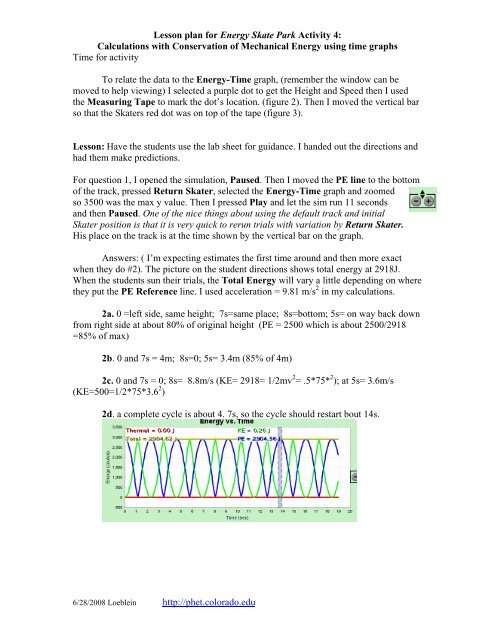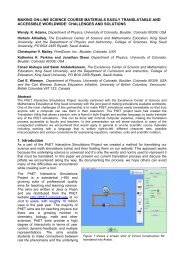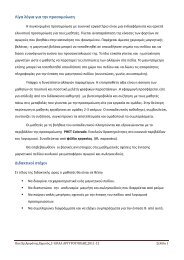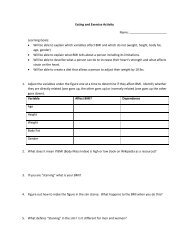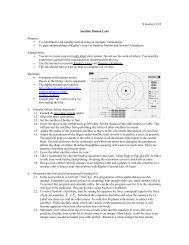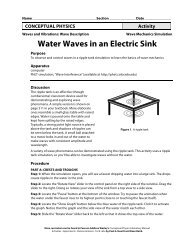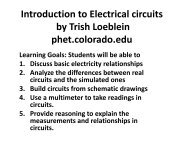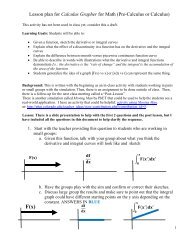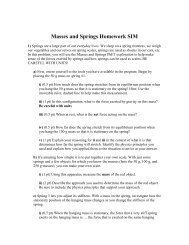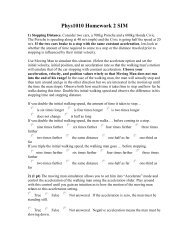lesson plans for Energy Skate park 4.pdf - PhET
lesson plans for Energy Skate park 4.pdf - PhET
lesson plans for Energy Skate park 4.pdf - PhET
Create successful ePaper yourself
Turn your PDF publications into a flip-book with our unique Google optimized e-Paper software.
Lesson plan <strong>for</strong> <strong>Energy</strong> <strong>Skate</strong> Park Activity 4:Calculations with Conservation of Mechanical <strong>Energy</strong> using time graphsTime <strong>for</strong> activityTo relate the data to the <strong>Energy</strong>-Time graph, (remember the window can bemoved to help viewing) I selected a purple dot to get the Height and Speed then I usedthe Measuring Tape to mark the dot’s location. (figure 2). Then I moved the vertical barso that the <strong>Skate</strong>rs red dot was on top of the tape (figure 3).Lesson: Have the students use the lab sheet <strong>for</strong> guidance. I handed out the directions andhad them make predictions.For question 1, I opened the simulation, Paused. Then I moved the PE line to the bottomof the track, pressed Return <strong>Skate</strong>r, selected the <strong>Energy</strong>-Time graph and zoomedso 3500 was the max y value. Then I pressed Play and let the sim run 11 secondsand then Paused. One of the nice things about using the default track and initial<strong>Skate</strong>r position is that it is very quick to rerun trials with variation by Return <strong>Skate</strong>r.His place on the track is at the time shown by the vertical bar on the graph.Answers: ( I’m expecting estimates the first time around and then more exactwhen they do #2). The picture on the student directions shows total energy at 2918J.When the students sun their trials, the Total <strong>Energy</strong> will vary a little depending on wherethey put the PE Reference line. I used acceleration = 9.81 m/s 2 in my calculations.2a. 0 =left side, same height; 7s=same place; 8s=bottom; 5s= on way back downfrom right side at about 80% of original height (PE = 2500 which is about 2500/2918=85% of max)2b. 0 and 7s = 4m; 8s=0; 5s= 3.4m (85% of 4m)2c. 0 and 7s = 0; 8s= 8.8m/s (KE= 2918= 1/2mv 2 = .5*75* 2 ); at 5s= 3.6m/s(KE=500=1/2*75*3.6 2 )2d. a complete cycle is about 4. 7s, so the cycle should restart bout 14s.6/28/2008 Loeblein http://phet.colorado.edu


